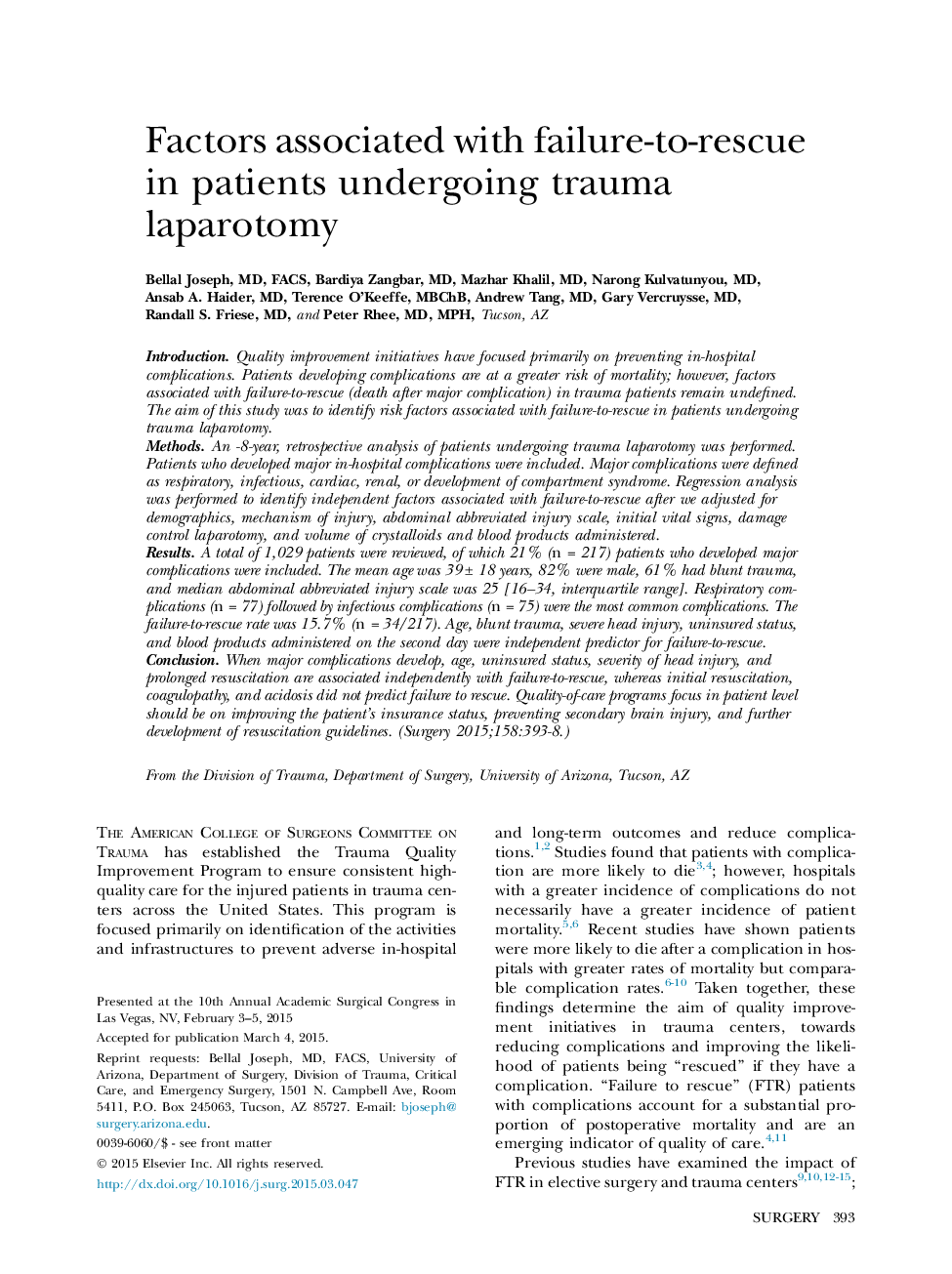| کد مقاله | کد نشریه | سال انتشار | مقاله انگلیسی | نسخه تمام متن |
|---|---|---|---|---|
| 4307007 | 1289235 | 2015 | 6 صفحه PDF | دانلود رایگان |
IntroductionQuality improvement initiatives have focused primarily on preventing in-hospital complications. Patients developing complications are at a greater risk of mortality; however, factors associated with failure-to-rescue (death after major complication) in trauma patients remain undefined. The aim of this study was to identify risk factors associated with failure-to-rescue in patients undergoing trauma laparotomy.MethodsAn -8-year, retrospective analysis of patients undergoing trauma laparotomy was performed. Patients who developed major in-hospital complications were included. Major complications were defined as respiratory, infectious, cardiac, renal, or development of compartment syndrome. Regression analysis was performed to identify independent factors associated with failure-to-rescue after we adjusted for demographics, mechanism of injury, abdominal abbreviated injury scale, initial vital signs, damage control laparotomy, and volume of crystalloids and blood products administered.ResultsA total of 1,029 patients were reviewed, of which 21% (n = 217) patients who developed major complications were included. The mean age was 39 ± 18 years, 82% were male, 61% had blunt trauma, and median abdominal abbreviated injury scale was 25 [16–34, interquartile range]. Respiratory complications (n = 77) followed by infectious complications (n = 75) were the most common complications. The failure-to-rescue rate was 15.7% (n = 34/217). Age, blunt trauma, severe head injury, uninsured status, and blood products administered on the second day were independent predictor for failure-to-rescue.ConclusionWhen major complications develop, age, uninsured status, severity of head injury, and prolonged resuscitation are associated independently with failure-to-rescue, whereas initial resuscitation, coagulopathy, and acidosis did not predict failure to rescue. Quality-of-care programs focus in patient level should be on improving the patient's insurance status, preventing secondary brain injury, and further development of resuscitation guidelines.
Journal: Surgery - Volume 158, Issue 2, August 2015, Pages 393–398
